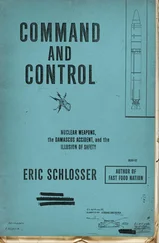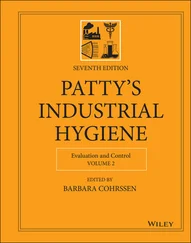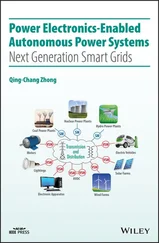PMU data‐based power‐load imbalance estimation is a key estimation to successfully handle the emergency control strategies, e.g. load shedding, and protection plans. In case of detecting a contingency or an emergency condition, following comparing of frequency, voltage, and their rate of changes with the specified threshold values, an estimation algorithm must estimate the size of disturbance to use in the available emergency control systems and special protection schemes. This online estimation is an important issue to realize a successful load‐shedding scheme with minimum amount of shed load.
Conventionally, for the estimation of the size of load‐power mismatch, the swing equation is used. The estimated imbalance based on this method may far from real power mismatch as it relies on three worst assumptions: (i) there is no additional active power variation except for that of disturbance, (ii) there is a negligible reactive‐power imbalance in response to sudden active power imbalance, and (iii) the inertia constant assumed to be known. This under/over‐estimation causes inaccurate calculation of total amount of load to be shed.
In [117], for estimating the size of disturbance, some appropriate base‐case features are selected from a set of pre‐defined base cases. Moreover, an efficient yet simple logic is defined to select appropriate base‐case for the received data. This approach benefits from the use of PMU data to precise calculation of the required amount of load to be shed, in one‐step and in a short time in comparison with the actual time. The proposed scheme relies on fast, yet iterative, estimation of frequency nadir, and time of minimum frequency occurrence. Accordingly, the inertia constant as well as the size of power mismatch are estimated which, in turn, compares with the maximum size of imbalance, satisfying the pre‐specified thresholds, to determine the amount of shed load.
Modern power grids face new technical challenges arising from the increasing penetration of power‐electronic‐connected RESs/DGs. Increasing MGs/DGs penetration level may adversely affect frequency response and voltage and system control and lead to degraded performance of traditional control schemes. This, in turn, may result in large deviations and, potentially, system instability.
This chapter provides the pre‐requirement terminology and general background for the next chapters of this book. The term power system stability and control with an updated brief review on the areas of frequency, voltage, and angle controls, concerning the penetration of RESs/DGs, is discussed. In response to the existing challenges in penetration of more RESs/DGs to the grid, the necessity of using data‐driven modeling, parameters estimation, and control synthesis in wide‐area power systems is emphasized.
1 1. Steinmetz, C.P. (1920). Power control and stability of electric generating stations. Transactions of the American Institute of Electrical Engineers XXXIX (2): 1215–1287.
2 2. Smith, J.R., Andersson, G., and Taylor, C.W. (1996). Annotated bibliography on power system stability controls: 1986–1994. IEEE Transactions on Power Systems 11 (2): 794–800.
3 3. Bevrani, H., Watanabe, M., and Mitani, Y. (2014). Power System Monitoring and Control. Wiley.
4 4. Bevrani, H. and Hiyama, T. (2009). On load‐frequency regulation with time delays: design and real time implementation, IEEE Transactions on Energy Conversion 24 (1): 292–300.
5 5. Bevrani, H. and Hiyama, T. (2011). Intelligent Automatic Generation Control. CRC Press.
6 6. Kundur, P. (1994). Power System Stability and Control, vol. 7. New York: McGraw‐Hill.
7 7. Kundur, P., Paserba, J., Ajjarapu, V. et al. (2004). Definition and classification of power system stability ieee/cigre joint task force on stability terms and definitions. IEEE Transactions on Power Systems 19 (3): 1387–1401.
8 8. Pierre, J.W., Trudnowski, D., Donnelly, M. et al. (2012). Overview of system identification for power systems from measured responses. IFAC Proceedings Volumes 45 (16): 989–1000.
9 9. Eriksson, R. and Soder, L. (2011). Wide‐area measurement system‐based subspace identification for obtaining linear models to centrally coordinate controllable devices. IEEE Transactions on Power Delivery 26 (2): 988–997.
10 10. Zhou, N., Lu, S., Singh, R., and Elizondo, M.A. (2011). Calibration of reduced dynamic models of power systems using phasor measurement unit (PMU) data. 2011 North American Power Symposium, Boston, MA (2011), pp. 1–7. doi: https://doi.org/10.1109/NAPS.2011.6024873.
11 11. Zhang, J., Lu, C., and Han, Y. (2013). MIMO identification of power system with low level probing tests: applicability comparison of subspace methods. IEEE Transactions on Power Systems 28 (3): 2907–2917.
12 12. Wiseman, B.P., Chen, Y., Xie, L., and Kumar, P. (2016). PMU‐based reduced‐order modeling of power system dynamics via selective modal analysis. In: 2016 IEEE/PES Transmission and Distribution Conference and Exposition (T&D), 1–5. IEEE.
13 13. Liu, H., Zhu, L., Pan, Z. et al. (2016). Comparison of MIMO system identification methods for electromechanical oscillation damping estimation. 2016 IEEE Power and Energy Society General Meeting (PESGM), Boston, MA (2016), pp. 1–5. doi: https://doi.org/10.1109/PESGM.2016.7741834.
14 14. Tuttelberg, K., Kilter, J., and Uhlen, K. (2017). Comparison of system identification methods applied to analysis of inter‐area modes. Proceedings of International Power Systems Transients Conference 2017, Seoul, South Korea (26–29 June 2017).
15 15. Ghasemi, H. and Canizares, C.A. (2008). Confidence intervals estimation in the identification of electromechanical modes from ambient noise. IEEE Transactions on Power Systems 23 (2): 641–648.
16 16. Dosiek, L., Pierre, J.W., and Follum, J. (2013). A recursive maximum likelihood estimator for the online estimation of electromechanical modes with error bounds. IEEE Transactions on Power Systems 28 (1): 441–451.
17 17. Uhlen, K., Warland, L., Gjerde, J.O. et al. (2008). Monitoring amplitude, frequency and damping of power system oscillations with PMU measurements. 2008 IEEE Power and Energy Society General Meeting – Conversion and Delivery of Electrical Energy in the 21st Century, Pittsburgh, PA (2008), pp. 1–7, doi: https://doi.org/10.1109/PES.2008.4596661.
18 18. Tripathy, P., Srivastava, S.C., and Singh, S.N. (2011). A modified TLS‐ESPRIT‐based method for low frequency mode identification in power systems utilizing synchrophasor measurements. IEEE Transactions on Power Systems 26 (2): 719–727.
19 19. Rogers, K.M., Spadoni, R.D., and Overbye, T.J. (2011). Identification of power system topology from synchrophasor data. 2011 IEEE/PES Power Systems Conference and Exposition, Phoenix, AZ (2011), pp. 1–8, doi: https://doi.org/10.1109/PSCE.2011.5772462.
20 20. Nabavi, S. and Chakrabortty, A. (2013). Topology identification for dynamic equivalent models of large power system networks. 2013 American Control Conference, Washington, DC, (2013), pp. 1138–1143. doi: https://doi.org/10.1109/ACC.2013.6579989.
21 21. Wang, X., Bialek, J.W., and Turitsyn, K. (2018). PMU‐based estimation of dynamic state jacobian matrix and dynamic system state matrix in ambient conditions. IEEE Transactions on Power Systems 33 (1): 681–690.
22 22. Tuttelberg, K., Kilter, J., Wilson, D., and Uhlen, K. (2018). Estimation of power system inertia from ambient wide area measurements. IEEE Transactions on Power Systems 33 (6): 7249–7257.
23 23. Zeng, F., Zhang, J., Zhou, Y., and Qu, S. (2020). Online identification of inertia distribution in normal operating power system. IEEE Transactions on Power Systems 35 (4): 3301–3304. https://doi.org/10.1109/TPWRS.2020.2986721.
Читать дальше












